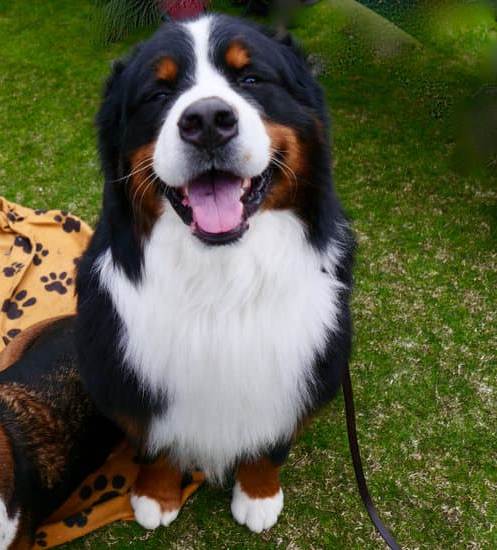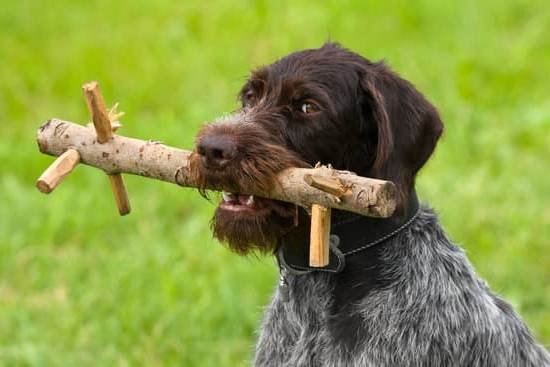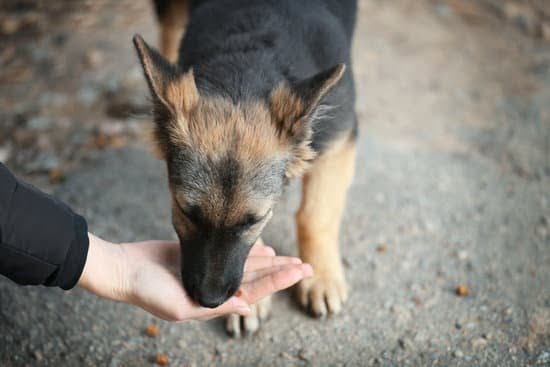Dog training has long been a significant aspect of our relationship with canines, spanning over centuries of human-dog companionship. The evolution of dog training techniques and practices is a testament to the enduring bond between humans and dogs. In this article, we will explore the captivating history of dog training, from its prehistoric roots to the advancements made in modern-day techniques.
Since ancient times, dogs have played various roles in human societies, including hunting partners, protectors, and loyal companions. Training them was essential to ensure their effectiveness in these roles. Throughout history, different civilizations have developed unique methods for training dogs that reflected their cultural values and needs.
In prehistoric times, early humans began domesticating dogs and utilizing basic training techniques. As civilization flourished, more sophisticated methods emerged in ancient societies such as Egypt, Rome, and Greece. Their training practices encompassed multiple purposes, including military applications, hunting skills enhancement, or simply nurturing the bond between humans and their four-legged friends.
As we delve into the world of dog training throughout history in the subsequent sections of this article, we will uncover how it has evolved over time to become an essential aspect of the modern world. From prehistoric origins to advanced digital tools used today, the fascinating journey of dog training unveils not only our deep connection with canines but also our remarkable capacity for innovation and understanding.
Prehistoric Roots
The bond between humans and dogs dates back thousands of years, with dog training having its origins in prehistoric times. This section will explore the early evidence of dog training and how ancient humans may have started domesticating dogs and using basic training techniques.
During the prehistoric era, early humans began to develop a symbiotic relationship with dogs. Archaeological evidence suggests that dogs were first domesticated over 15,000 years ago, with some estimates dating their domestication as far back as 30,000 years ago. The exact process of domestication is still debated among scientists, but it is likely that early humans gradually tamed and trained wild wolves for various purposes.
Basic training techniques were essential during this time period to ensure the survival and cooperation between humans and their canine companions. Dogs were likely trained for practical tasks such as hunting alongside humans or providing protection for settlements. These early training methods would have relied on positive reinforcement, rewards for desired behaviors, and potentially punishment for undesired behaviors.
Ancient civilizations such as Egypt, Rome, and Greece also played a significant role in the history of dog training. Dogs were valued for various purposes in these societies including military uses, hunting, guarding property, and companionship. Training methods varied depending on the intended purpose of the dogs.
In Ancient Egypt, for example, hunting dogs were highly prized by pharaohs and nobility. These dogs were selectively bred for specific traits and received specialized training to excel in their roles as hunting companions. In Rome and Greece, military dogs were trained extensively to perform various tasks such as attack or defend against enemy forces.
Overall, the prehistoric roots of dog training laid the foundation for future advancements in canine education. The close partnership between early humans and dogs required effective communication through basic training techniques. As humanity moved forward from prehistoric times into ancient civilizations, new approaches to dog training would emerge based on cultural needs and advancements in society.
Ancient Civilizations and Dog Training Techniques
As we delve into the fascinating history of dog training, it becomes clear that our bond with dogs is not a recent phenomenon. In fact, evidence of dog training techniques can be traced back to ancient civilizations such as Egypt, Rome, and Greece. These civilizations recognized the value of trained dogs in various aspects of society, including military endeavors, hunting expeditions, and companionship.
In ancient Egypt, dogs held a significant cultural and religious importance. They were often depicted in artwork and were believed to possess protective qualities. Dogs were also trained for practical purposes such as guarding homes and assisting in hunting activities. Hieroglyphs found in temples and tombs depict scenes of hunting dogs being commanded with hand signals or vocal commands.
Similarly, ancient Rome valued the skills and abilities of properly trained dogs. Roman soldiers relied on well-trained canines for warfare purposes, including tracking enemies, alerting their human counterparts to potential threats, and even attacking adversaries. Not only were these military-trained dogs highly efficient on the battlefield, but they also served as loyal companions to the soldiers during times of peace.
In ancient Greece, dog training had a more multifaceted approach. Greek hunters placed great importance on having well-disciplined hounds by their side during their hunts. These dogs would assist hunters in chasing game animals or retrieving wounded prey. Greeks also appreciated the companionship and loyalty that well-trained dogs provided within households.
These ancient civilizations used a combination of discipline-based training methods involving rewards and punishments to shape desired behaviors in their canine companions. Often incorporating verbal cues or physical gestures into their training routines, humans developed an understanding with these remarkable animals that allowed them to communicate effectively.
Understanding how ancient civilizations integrated dog training into various aspects of their lives sets the foundation for the development of more advanced dog training techniques throughout history. From military applications to hunting expeditions to everyday companionship roles, dogs have been integral to human societies for centuries. Their adaptability, loyalty, and willingness to learn have made them ideal partners in an ever-evolving world.
Dog Training During the Middle Ages
During the Middle Ages, dog training practices experienced a significant shift influenced by religious beliefs and superstitions. This period marked a departure from the more practical purposes of dog training seen in ancient civilizations, such as hunting and companionship. Instead, dogs were associated with negative connotations and were often viewed as being connected to witchcraft or demonic entities. As a result, fear-based training methods became more prevalent during this time.
Religion played a significant role in shaping the perception of dogs and influencing their training. In Christianity, dogs were often associated with sin and were seen as unclean animals. This belief led to the mistreatment of dogs and hindered the development of positive relationships between humans and these animals. Dogs were frequently subjected to cruel practices in an attempt to eliminate any potential connection to evil forces.
Superstitions also contributed to the shift in dog training practices during the Middle Ages. Some believed that certain breeds or physical characteristics made dogs more susceptible to being possessed by demons or witches. As a result, efforts were made to identify and eliminate these perceived “evil” traits through harsh training methods.
Despite these negative associations with dog training during the Middle Ages, specialized roles for trainers began to emerge. Hunting dog trainers became sought after due to the popularity of falconry, which was a favored pastime among nobility. These trainers utilized specific techniques, such as scenting exercises and obedience commands, to prepare hunting dogs for their roles.
The Renaissance
During the Renaissance, there were significant advancements in dog training techniques and the establishment of formal dog training schools. This period marked a shift towards more systematic and structured approaches to training dogs.
One notable figure during this time was Konrad Most, a German animal trainer who is often referred to as the “father of modern dog training.” Most emphasized the use of positive reinforcement and developed a system of commands that focused on clear communication between humans and dogs. His book “Training Dogs: A Manual” became a foundational resource for dog trainers during the Renaissance.
Another important development during this period was the emergence of specialized dog training schools. These schools provided comprehensive training programs that covered various aspects such as obedience, protection work, and tracking. One example is the Naples School of Dog Training in Italy, where dogs were trained specifically for military purposes.
The Renaissance also saw an increased interest in using dogs for entertainment purposes. Dog shows became popular events, showcasing well-trained dogs performing tricks and displaying their skills. These events not only entertained audiences but also served as opportunities for trainers to showcase their expertise.
Overall, the Renaissance marked a significant milestone in the evolution of dog training. It laid the foundation for modern training techniques by emphasizing positive reinforcement and establishing formal training schools. The developments during this period continue to influence dog training practices today.
| Advancements | Effects |
|---|---|
| Shift towards positive reinforcement | Emphasized clear communication and strengthened bond between humans and dogs |
| Establishment of formal dog training schools | Provided systematic and comprehensive training programs |
| Rise of dog shows | Showcased well-trained dogs and contributed to the popularity of dog training |
The Industrial Revolution and the Professionalization of Dog Training
The Impact of the Industrial Revolution on Dog Training
During the Industrial Revolution in the 18th and 19th centuries, significant changes swept across society, affecting various aspects of life, including dog training. The industrial advancements brought about urbanization, changes in lifestyle, and a shift in attitudes towards dogs. These changes played a crucial role in shaping dog training practices during this period.
With the rise of urban centers and the decline of agricultural societies, dogs’ roles began to change. Previously used predominantly for hunting and herding purposes, dogs now had different functions as companions or as working animals in factories and mines. Therefore, there emerged a need for new training methods to adapt to their evolving roles.
One noteworthy impact of the industrialization was the emergence of specialized dog trainers who catered to specific needs. For example, hunting enthusiasts sought out professionals who could train their hunting dogs effectively. These trainers developed techniques geared towards honing a dog’s natural instincts and abilities while still being obedient to their owners’ commands.
The Rise of Dog Shows and Competitions
As society shifted towards an increasingly leisure-oriented culture during the Industrial Revolution, dog shows gained popularity as a form of entertainment. These events showcased various breeds’ skills and appearances and created opportunities for networking among dog enthusiasts.
The participation in these competitions necessitated consistent training efforts to meet breed standards and exhibit desirable behaviors. Consequently, this led to further professionalization within the field of dog training. Expert trainers emerged who focused on improving performance through specialized techniques like obedience training and agility exercises.
Moreover, with dog shows serving as platforms for breeders to showcase their superior stock or bloodlines, there developed a demand for trainers who could work with these high-quality pedigree dogs effectively. It became essential not only to train them but also to handle them correctly during competitions.
The Professionalization of Dog Training
The demands brought about by dog shows and the evolving roles of dogs led to the professionalization of dog training during the Industrial Revolution. Trainers began to establish reputations based on their expertise and demonstrated results, leading to the establishment of formal training schools and academies.
These institutions provided education and training for aspiring trainers, teaching them techniques that were effective, humane, and reliable. The development of standardized methods helped elevate dog training into a recognized profession.
Overall, the Industrial Revolution played a significant role in shaping the professionalization of dog training. As society changed, so did people’s perspectives on what dogs could do and how they should be trained. The emergence of specialized trainers, the popularity of dog shows, and the establishment of formal training schools all contributed to moving dog training from an informal practice to a respected profession.
Modern Training Methods
Psychology and Conditioning
In the 20th century, there was a significant shift in dog training methods that emphasized the role of psychology and conditioning. This approach focused on understanding the principles of animal behavior and utilizing positive reinforcement to shape desired behaviors in dogs. The pioneers of this modern training approach were influential figures such as B.F. Skinner, Ivan Pavlov, and Edward Thorndike.
Skinner’s theory of operant conditioning became a cornerstone of dog training techniques. It involved rewarding dogs for desired behaviors, using treats, praise, or play as positive reinforcement. By associating the desired behavior with a pleasurable outcome, dogs were more likely to repeat that behavior in the future. This method brought about a more cooperative and trusting relationship between humans and their canine companions.
The Rise of Prominent Dog Trainers
The modernization of dog training also saw the emergence of prominent dog trainers who further developed and popularized positive reinforcement-based methods. Notable figures such as Ian Dunbar, Karen Pryor, and Patricia McConnell played instrumental roles in championing humane training techniques.
Ian Dunbar’s groundbreaking work emphasized socialization and early puppy training. He promoted puppy kindergarten classes where young dogs could learn proper manners and social skills while being positively reinforced for good behavior. Karen Pryor introduced clicker training into the mainstream, which uses a small handheld device that emits a distinct sound to mark desired behaviors before rewarding them.
Behavioral Science and Dog Training
The integration of behavioral science into dog training revolutionized not only how we train dogs but also how we understand them. Professionals started looking beyond traditional dominance-based theories to decipher the motivations behind certain behaviors exhibited by our canine companions.
Prominent behaviorists such as Jean Donaldson and Patricia McConnell delved into complex issues like fear aggression and separation anxiety from a scientific perspective. Their research helped demystify problematic dog behaviors and provided positive reinforcement-based strategies to address them. This shift towards understanding the underlying causes of behavior has not only resulted in more effective training methods but also improved the overall welfare of dogs.
Modern training methods centered around psychology and positive reinforcement have paved the way for a more compassionate and cooperative approach to dog training. These approaches place an emphasis on building trust, fostering communication, and strengthening bonds between humans and dogs. As our understanding of canine behavior continues to evolve, it is expected that further advancements in training techniques will lead to even better outcomes for both humans and their furry companions.
Training Dogs in the Digital Age
With the advent of technology, dog training in the digital age has seen both opportunities and challenges. The integration of technology into dog training practices has opened up new possibilities for pet owners and trainers alike. From remote training collars to smartphone apps, these technological advancements provide convenient tools for effective training. However, reliance on technology also raises ethical considerations and potential consequences.
One significant opportunity that technology brings to dog training is the use of remote training collars. These collars allow trainers to deliver signals to dogs from a distance, providing immediate feedback for unwanted behaviors or reinforcing desired actions. Remote training collars can be especially beneficial for working dogs or dogs with behavioral issues that require consistent and precise training.
Moreover, smartphone apps have revolutionized dog training by offering quick access to information, tips, and even virtual trainers. These apps provide step-by-step guides, video demonstrations, and interactive features that assist pet owners in understanding and implementing proper training techniques at their convenience. They also facilitate progress tracking and offer personalized advice based on individual dog characteristics.
However, the increasing reliance on technology for dog training raises concerns about its ethical implications and potential consequences. Critics argue that excessive use of remote training collars can lead to punishment-based approaches rather than focusing on positive reinforcement methods which are proven to be more effective and humane in shaping behavior. Additionally, there is a risk of causing accidental harm or distress if not used properly.
Furthermore, the use of smartphone apps may create a dependency on technology while neglecting essential elements of building a bond between humans and dogs through face-to-face interactions. Some experts express concerns that too much reliance on app-driven instructions may lead to an oversimplification of complex behavioral issues that require hands-on assessment from professionals.
Data Table: Training Dogs in the Digital Age
| Opportunities | Challenges |
|---|---|
| Use of remote training collars for precise feedback and distance training | Potential use of punishment-based approaches with excessive reliance on remote training collars |
| Smartphone apps providing convenient access to information and personalized advice | Risk of oversimplification of complex behavioral issues without hands-on assessment from professionals |
Conclusion
In conclusion, the history of dog training is a fascinating journey that showcases the strong bond between humans and dogs throughout time. From prehistoric roots to modern training methods, dog training has evolved significantly, reflecting advancements in society, culture, and our understanding of canine behavior.
Throughout the ages, early humans began domesticating dogs and using basic training techniques to assist with various tasks such as hunting and companionship. Ancient civilizations like Egypt, Rome, and Greece developed their own unique training methods for different purposes such as military use or hunting.
During the Middle Ages, religious beliefs and superstitions influenced dog training practices. However, this period also saw the emergence of specialized roles like hunting dog trainers who honed specific skills necessary for working with these animals.
The Renaissance brought advancements in dog training with the establishment of formal training schools and notable figures contributing to new techniques. The Industrial Revolution further impacted dog training practices by professionalizing it through dog shows and competitions. Finally, in the 20th century, there was a shift towards positive reinforcement-based methods thanks to influential trainers and behaviorists.
As we enter the digital age, technology has made its way into dog training practices with the introduction of remote collars and smartphone apps. While technology offers innovative opportunities for more efficient and effective training methods, ethical considerations must be taken into account to ensure that our reliance on it does not overshadow our understanding of canine behavior.
Ultimately, the evolution of dog training exemplifies how humans’ relationship with dogs has evolved from mere survival companions to beloved family members. With further advancements on the horizon driven by research in psychology and animal behavior science, there is much promise for continued progress in enhancing our interactions with these incredible creatures.
By continually striving to deepen our understanding of dogs’ needs and abilities, we can build an even stronger partnership based on trust and respect for many generations to come.
Frequently Asked Questions
How did humans learn to train dogs?
Humans learned to train dogs through thousands of years of interaction and observation. The process likely began when early humans formed an alliance with wolves, their ancestors, for hunting and protection. This mutual relationship gradually evolved into a close bond, leading humans to develop techniques to communicate and cooperate with dogs effectively.
Through trial and error, they learned which behaviors were desirable and rewarded those actions accordingly. Over time, this knowledge has been passed down through generations, refining the understanding of dog training methods.
How did they train dogs in the old days?
In the past, dog training methods varied depending on the culture, time period, and specific purposes for which the dogs were trained. Many ancient civilizations used positive reinforcement techniques such as rewarding desired behaviors with food or praise.
For example, ancient Greeks trained their canines for herding livestock by actively encouraging behavior that aligned with their role as herd guardians. Similarly, ancient Egyptians trained dogs to assist in hunting and other tasks by utilizing a system of rewards for desired actions while discouraging unwanted behaviors through non-punitive means.
Who was the first ever dog trainer?
It is challenging to pinpoint one individual as the first ever dog trainer due to the longstanding relationship between humans and dogs throughout history. However, one notable figure in dog training history is Konrad Most, a German animal trainer who lived in the late 19th century. Most is often referred to as the “father of modern dog training.”
He emphasized the use of positive reinforcement methods rather than harsh punishment-based techniques that were prevalent at the time. Most’s influence led to significant advancements in our understanding of canine behavior and laid the foundation for contemporary dog training practices that prioritize humane approaches based on trust and cooperation between humans and their canine companions.

Welcome to the blog! I am a professional dog trainer and have been working with dogs for many years. In this blog, I will be discussing various topics related to dog training, including tips, tricks, and advice. I hope you find this information helpful and informative. Thanks for reading!





